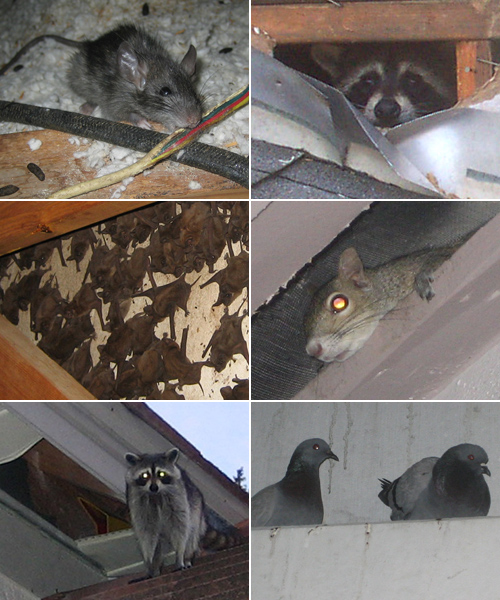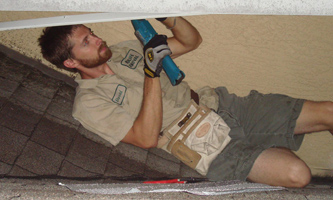- USA Wildlife Removal Education Guide and Resources
How To Inspect Your House To Find Animal Entry Holes
HOME INSPECTIONS & REPAIRS
The animals in your house or attic are getting inside somehow. Every area of the house must be checked thoroughly, from ground level gaps, vents, soffit vents, eave gaps, plumbing stacks, chimneys and more. We know all of the areas that animals can and do use, and the telltale signs. Raccoons tend to rip open one large hole. Squirrels tend to chew. Rats and mice can enter very small holes, but the areas vary by species of rodent. We seal up your house and make it completely 100% wildlife-proof. We perform our repairs with professional grade methods and steel, so that new animals can't chew their way in. This not only prevents future wildlife from entering, but certain jobs aren't even possible without repairs.

Common Entry Points Within The Home
The first thing to consider when you are trying to find out how wild animals are getting in to your property is the signs that lead you to think they are in your home. If you are hearing scratching in the roof, then that will be the first place to look for entry points, and if you're hearing noises in the wall, that will be the place to examine during a home inspection. Here are five of the most common entry points for animals getting in to the home:
- 1. Damaged soffits or vents in the roof
- 2. Loose vents or damaged masonry in the walls
- 3. An uncovered chimney
- 4. Loose roof tiles
- 5. Where soffits or dormers meet the roof
- 6. Open areas under a porch or deck
- 7. Plumbing stacks
Inspecting The Attic For Animal Entry Holes
One of the challenges of the attic when it comes to finding the entry points that animals are using to get in and out is that there are many dark and small nooks and crannies, and in many cases you will need to be very flexible in order to find them. For example, rats can squeeze through holes around the size of a quarter, so any chink of light that you see leading to the outside could be a potential entry point. A good way to find out how the animals are getting into the attic is to look for other signs such as droppings, as this will be signs of a high traffic area for these animals.
Examining The Roof For Entry Holes
When it comes to seeing the entry holes on the roof, the first step is to carry out an external examination of the roof to see if there are any obvious points where animals could be going in and out. Signs such as a vent that have been chewed, or is hanging slightly askew can be fairly straightforward to spot, but it is also important to make sure that you look around the roof line too. It is also worth carrying out a visual inspection of the roof tiles as well, as a loose tile or even one that just has a little bit of up and down movement can be a weak point that is being used by animals to gain access to the roof.
Finding Entry Holes In The Walls
If you are hearing scratching in the walls, then in most cases the animals causing the noise will be fairly small, because the cavities in the walls are generally fairly small too. This means that you will be looking for fairly small holes, and these can be present at both the top and bottom of the walls. Try to identify where in the walls you hear the animal noise, and use that as a starting point, and look for areas where there is damaged masonry or missing vents or other access points they could be using to get in and out.
Dealing With Holes Once You Have Identified Them
Once you have found the entry holes, then you can start to think about dealing with the animals and sealing these holes. The most important thing of all is to make sure that you have removed the wild animals from your home before you start sealing them. Live trapping and removal is one of the better options in some cases, while other people will use different kinds of trapping or exclusion methods to deal with the animals. When it comes to sealing the holes, try to make sure that all vents and entry points are fully secured, and look to use materials that will prove durable and will keep the animals out, otherwise you could be dealing with the same problem in a few months time.
Go back to the main How to Get Rid of Wild Animals page for more information about animal trapping and information about How To Inspect Your House To Find Animal Entry Holes.


